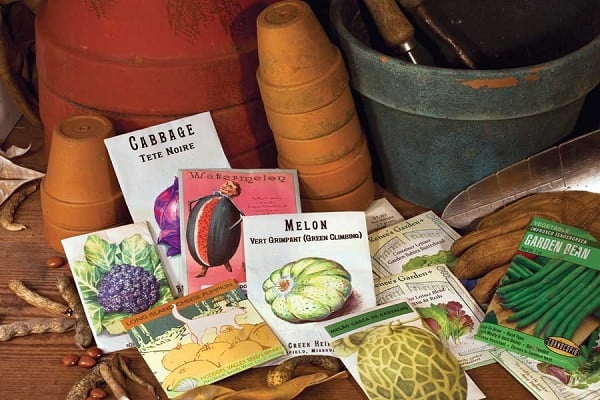Are you interested in growing your own sugar snap peas? Well, you’re in luck! Sugar snap peas are not only delicious but also easy to grow in your own backyard.
In this article, we will explore how tall sugar snap peas can grow and provide you with tips on supporting and training your plants for optimal growth. When it comes to sugar snap peas, they thrive in cool weather conditions and require full sun to reach their maximum height. With proper care and attention, these plants can grow up to six feet tall, providing you with a bountiful harvest.
To ensure the safety of your plants, it’s important to provide them with the necessary support they need to grow upright. We will discuss various methods for supporting and training your sugar snap pea plants, including trellises, stakes, and netting.
So, get ready to embark on a gardening adventure and enjoy the sweet rewards of growing your own sugar snap peas! Let’s dive in and discover how tall these plants can truly grow.
Quick Summary
- Sugar snap peas can reach up to six feet tall when grown in optimal conditions.
- Supporting and training the plants with trellises, stakes, or netting is important for their upright growth.
- Sugar snap peas prefer cool weather and full sun for optimal growth.
- Proper soil preparation with organic matter and consistent moisture are important for the success of sugar snap peas.
An Introduction to Sugar Snap Peas
If you’re interested in growing sugar snap peas, you’ll be amazed at how tall they can grow in just a few months. These vibrant and nutritious vegetables have many benefits for both your health and the environment.
Sugar snap peas are a great addition to any garden because they not only provide a beautiful green backdrop, but they also offer a plethora of nutritional benefits. One of the main benefits of growing sugar snap peas is their high nutritional value. These peas are packed with vitamins and minerals, including vitamin C, vitamin K, and folate. They also contain fiber, which is essential for a healthy digestive system. Incorporating sugar snap peas into your diet can help boost your immune system and promote overall well-being.
Aside from their nutritional benefits, sugar snap peas can also reach impressive heights. On average, they can grow up to 6 feet tall. This makes them a perfect addition to any vertical garden or trellis system. By utilizing these structures, you can maximize your garden space and create a stunning visual display.
So, if you’re looking for a versatile and nutritious vegetable to grow in your garden, sugar snap peas are an excellent choice. Not only will they provide you with a bountiful harvest, but they will also add beauty and height to your garden space.
The Growing Conditions for Sugar Snap Peas
Imagine yourself in a lush garden, surrounded by vibrant green vines that reach towards the sky, thriving in the perfect conditions for their growth. As you stand among these magnificent sugar snap pea plants, you can’t help but marvel at their beauty and potential.
To ensure the success of your own sugar snap peas, there are a few important growing techniques and a proper planting schedule to follow.
-
Soil preparation: Start by preparing a well-draining soil rich in organic matter. This will provide the necessary nutrients for your sugar snap peas to flourish.
-
Planting schedule: Sugar snap peas prefer cool weather, so it’s best to plant them in the early spring or late fall. Avoid planting them during the hot summer months, as they may struggle to thrive in the heat.
-
Trellising: These vigorous climbers need support to reach their full potential. Install trellises or stakes to guide their growth upwards, preventing them from sprawling on the ground.
-
Watering and mulching: Sugar snap peas require consistent moisture, especially during flowering and pod development. Water deeply and regularly, ensuring the soil remains evenly moist. Applying a layer of mulch around the base of the plants will help conserve moisture and suppress weeds.
By following these growing techniques and planting schedule, you can create the perfect conditions for your sugar snap peas to reach their maximum height and produce an abundant harvest. Happy gardening!
The Different Varieties of Sugar Snap Peas
Surrounded by a lush garden, you’ll be captivated by the diverse array of sugar snap pea varieties, each offering a unique and tantalizing flavor experience.
When it comes to the nutritional benefits of sugar snap peas, you’ll be pleased to know that they’re packed with goodness. These little green gems are low in calories and high in fiber, making them a great addition to any diet. They’re also a good source of vitamin C, vitamin K, and folate, which are essential for overall health.
But it’s not just their nutritional benefits that make sugar snap peas so appealing. They also have a wide range of culinary uses. From stir-fries to salads, sugar snap peas can add a delightful crunch and sweetness to any dish. Their vibrant green color and crisp texture make them a popular choice for vegetable platters and crudité. You can also enjoy them raw as a healthy and refreshing snack.
When it comes to growing sugar snap peas, it’s important to provide them with the right conditions. They thrive in cooler weather and prefer well-drained soil. Make sure to give them plenty of sunlight and water regularly. With proper care, you can expect your sugar snap peas to reach a height of about 6 to 8 feet.
So get ready to enjoy the bountiful harvest of these versatile and nutritious vegetables!
How Tall Can Sugar Snap Peas Grow?
Prepare to be amazed by the astonishing height that these remarkable legumes can achieve in optimal growing conditions! Sugar snap peas, known for their sweet and crunchy pods, can reach impressive heights when given the right environment to thrive.
The maximum height that sugar snap peas can grow varies depending on the variety and growing conditions, but on average, they can reach heights of 6 to 8 feet.
To ensure that your sugar snap peas reach their maximum height, it’s crucial to provide them with ideal growing conditions. First and foremost, these legumes require a sunny location with at least six to eight hours of direct sunlight daily. They also need well-drained soil that’s rich in organic matter. Prior to planting, it’s recommended to prepare the soil by adding compost or aged manure to improve its fertility and drainage.
Supporting the vines is essential for their vertical growth. Installing trellises, stakes, or fences will provide the necessary support for the plants to climb and reach their maximum height. Regularly checking and tying the vines to the support structure will prevent them from falling or breaking, ensuring the safety of both the plants and gardeners.
Sugar snap peas have the potential to grow to impressive heights, reaching up to 6 to 8 feet. By providing them with ideal growing conditions, such as ample sunlight, well-drained soil, and proper support, you can witness the remarkable height that these legumes can achieve. Happy gardening and enjoy the bountiful harvest of tall sugar snap peas!
Do Bell Pepper Plants and Sugar Snap Peas Grow to the Same Height?
When it comes to bell pepper plant height and sugar snap peas, there are distinct differences. While sugar snap peas tend to grow vertically and can reach heights of up to 6 feet, bell pepper plants generally grow shorter, typically ranging from 2 to 4 feet.
Tips for Supporting and Training Sugar Snap Pea Plants
Get ready to give your sugar snap pea plants the support they need to reach their full potential! Supporting and training your sugar snap pea plants is essential for their growth and productivity. There are various methods and techniques you can use to ensure their safety and help them thrive.
One effective method is using trellises or stakes to support the plants as they grow. A trellis provides a sturdy structure for the plants to climb on, while stakes offer individual support for each plant. This prevents the vines from sprawling on the ground, reducing the risk of pests and diseases.
Another technique is the use of netting or mesh to create a supportive barrier around the plants. This helps to guide the vines upward and prevents them from tangling or falling over. It also makes it easier to harvest the peas when they are ready.
To provide additional stability, consider using twine or plant ties to secure the vines to the trellis or stakes. This prevents them from getting damaged by strong winds or heavy rain.
Remember to regularly check and adjust the supports as the plants grow taller. This ensures that they are properly supported throughout their growth cycle.
By implementing these supporting methods and training techniques, you can help your sugar snap pea plants grow tall and strong, while ensuring their safety and optimal productivity. Happy gardening!
Harvesting and Enjoying Sugar Snap Peas
Make sure you savor the sweet and crunchy taste of these delicious peas by harvesting them when they’re plump and ready to be enjoyed. To ensure that you preserve the flavor and texture of your sugar snap peas, it’s important to harvest them at the right time.
When the pods are round and filled with peas, gently hold the stem with one hand and use the other hand to snap the pod off the vine. Be careful not to damage the plant or nearby pods. It’s best to harvest your sugar snap peas in the morning when they’re still cool and crisp.
Once you’ve harvested your sugar snap peas, there are various ways to enjoy them. You can eat them raw as a refreshing and healthy snack. They can also be cooked in a variety of delicious dishes. Sugar snap peas add a delightful crunch to stir-fries, salads, and pasta dishes. They can even be pickled or blanched and frozen for later use.
If you’re looking for some tasty recipes, try making sugar snap peas with garlic and sesame oil, or toss them with lemon and Parmesan cheese for a zesty side dish. The possibilities are endless!
Remember, when cooking sugar snap peas, be sure not to overcook them as they can become mushy. Aim for a vibrant green color and a slightly crisp texture. With these tips in mind, you can enjoy the delectable flavor and satisfying crunch of sugar snap peas all year round.
Common Pests and Diseases of Sugar Snap Peas
Be aware of the pesky invaders and destructive diseases that can ruin your bountiful harvest of these delectable green gems. Pest control and disease prevention are crucial in ensuring the health and productivity of your sugar snap peas.
When it comes to pest control, one common enemy of sugar snap peas is aphids. These tiny insects can quickly multiply and suck the sap from the leaves, causing them to yellow and wilt. To get rid of aphids, you can try spraying your plants with a mixture of water and dish soap or using insecticidal soap. Ladybugs are also natural predators of aphids and can help keep their population in check.
Another pesky invader to watch out for is the pea weevil. These beetles lay their eggs on the developing pea pods, and the larvae can cause significant damage by feeding on the seeds. To prevent pea weevil infestation, you can rotate your crops each year and remove any infested pods immediately.
In terms of disease prevention, powdery mildew is a common issue for sugar snap peas. This fungal disease appears as a white or gray powdery coating on the leaves and can inhibit photosynthesis. To prevent powdery mildew, make sure your plants have good air circulation and avoid overhead watering.
By staying vigilant and implementing proper pest control and disease prevention measures, you can enjoy a thriving harvest of sugar snap peas.
Frequently Asked Questions
Are sugar snap peas easy to grow?
Yes, sugar snap peas are perfect for beginners in gardening. They are easy to grow and require minimal maintenance. However, be cautious of common pests and diseases such as aphids and powdery mildew.
How long does it take for sugar snap peas to mature?
To harvest sugar snap peas at the right time, wait until they are fully matured. This usually takes about 60-70 days. Ensure you plant them in well-draining soil with a pH of 6.0-7.5 for optimal growth.
Can sugar snap peas be grown in containers?
Yes, sugar snap peas can be grown in containers using container gardening techniques. It is a safe and convenient way to grow them, allowing you to enjoy fresh, homegrown peas even if you have limited space.
How often should sugar snap peas be watered?
To ensure healthy growth, water your sugar snap peas regularly, about 1-2 inches per week. Check the soil moisture by sticking your finger in the soil up to the first knuckle. Keep the soil consistently moist, but not waterlogged.
Can sugar snap pea plants withstand frost or cold temperatures?
Yes, sugar snap pea plants can tolerate frost and cold temperatures. They have good frost tolerance and resilience in cold weather. You can safely plant them without worrying about the cold damaging them.
Conclusion
In conclusion, growing sugar snap peas can be a rewarding and enjoyable experience. By providing the right growing conditions, such as full sun and well-drained soil, you can encourage healthy growth and maximize the height of your plants.
Remember to support and train your sugar snap pea plants to ensure they grow upright and reach their full potential. With proper care and attention, you’ll soon be able to harvest and savor the delicious taste of these sweet and crunchy peas.
Keep an eye out for common pests and diseases, and address them promptly to protect your crop. Happy gardening!








